Creating a welcome letter for new patients serves a few purposes: it expresses how thankful you are to have their future business, provides information about your practice, and provides information regarding their upcoming appointment. Dentrix Ascend provides a letter template that you can customize to create welcome letters for new patients. The welcome letter template contains merge fields to streamline your workflow.
How to:
- On the Home menu, click Letters under Location.
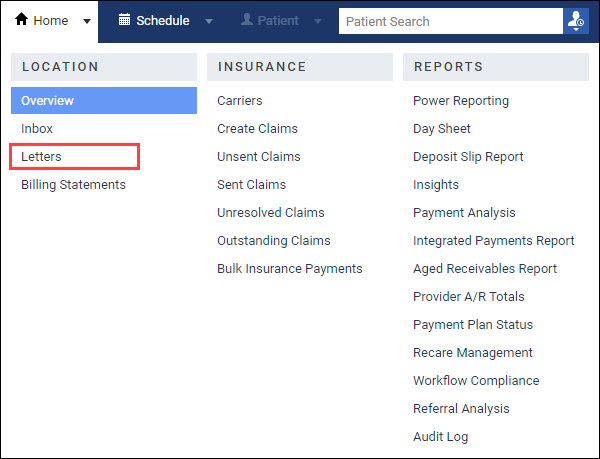
- Expand New Patient Welcome, and then select New Patient Welcome Letter (Before Visit).
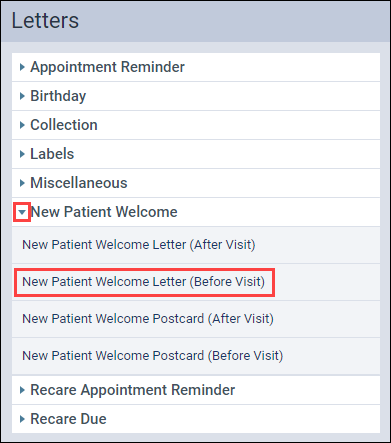
- On the Filters tab, expand the Patient Type, Patient Gender, Registered within the last, and Providers filters to view the default selections for each and change them as needed.

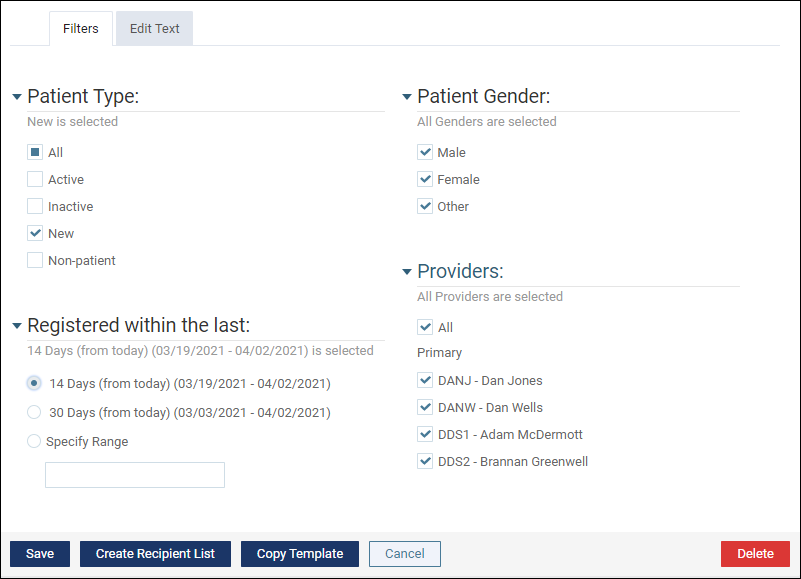
- Select the Edit Text tab to preview the new-patient welcome letter template.

- Change the content and layout of the letter template, format the text as needed, and then click Copy Template to save the letter with a new name if you want to keep the template for future use. Note: If you click Save, the existing template will be overwritten with your changes. Then, click Create Recipient List.
Note: A merge field appears in the template as text enclosed in square brackets. Merge fields insert data from the new-patient’s record.
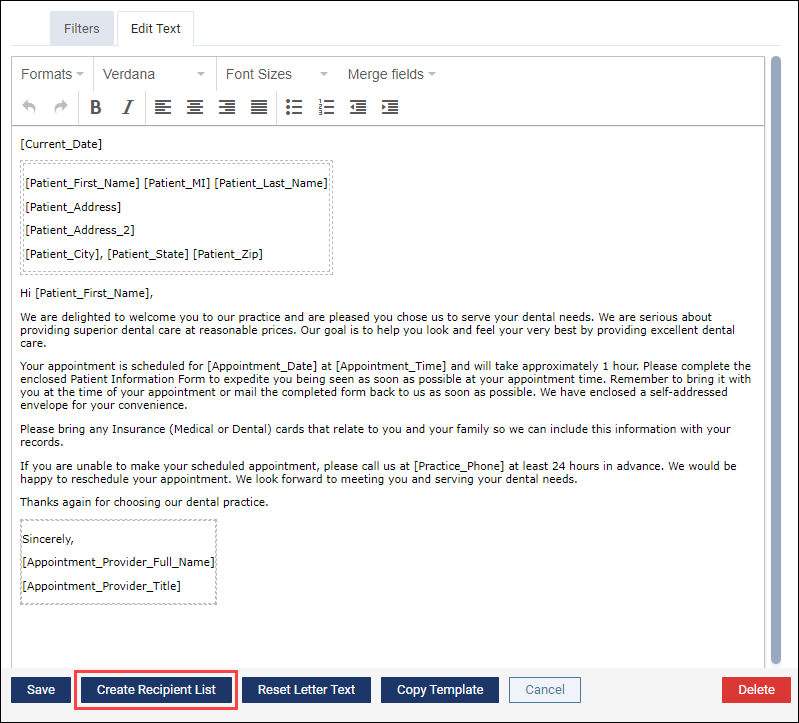
- Click Print Selected.
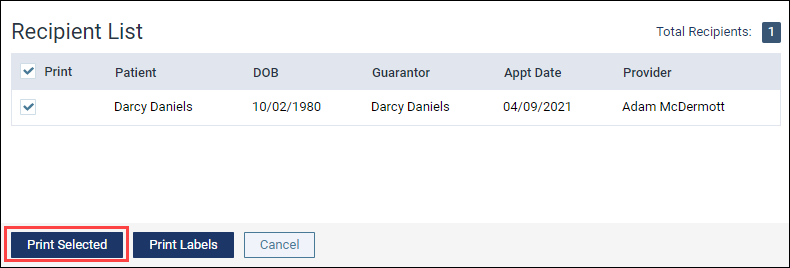
A .pdf copy of the letter (merged with the applicable patient and/or practice information) appears on a new browser tab.
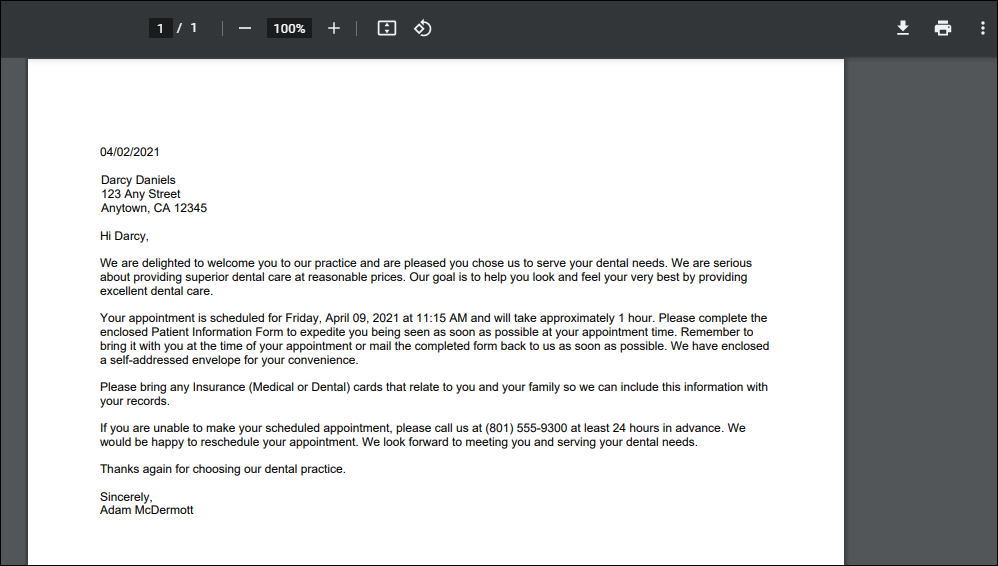
- Click the printer icon. Select Save as PDF to save an electronic copy of the letter if you want email it to the patient, or select your office printer to print the letter if you want to mail it to a patient.
Additional Information
- The new-patient welcome letter template contains placeholders or merge fields that insert information from the Patient Information page, such as patient first and last name, address (including city, state, and zip code), appointment date and time, provider full name, and provider title. If any of this information is missing on the Patient Information page, the corresponding area in the resulting letter will be blank.
- To learn more about creating letters for patients, read Creating patient letters.
